Calendar story, or wheel in the Wheel

To start the Time we should first choose some cyclic object. Sun and Moon are most obvious pretenders. Their cyclicity is used in any calendar system. The minimal cycle is what we call the day - axis's revolution of the Earth. This circle is the base for any known calendar. Comprehensive cycles may differ in different system. We usually call them weeks, months, years, et cetera. That's why Time was associated with Wheel in many cultures. Even those civilizations which didn't use the wheel in their usual life, did use wheel as time keeping conception. Moreover, they didn't even think about every day usage of so sacral object. For example, Sumers knew nothing about vehicles with wheels, but invented the Potter's wheel and Zodiac wheel with 360 parts division!
Sun vs Moon

It is more important to trace the Moon movement for hunters, fishers and breeders. The reason is a known correlation between Moon phases and behaviors of animals and some humans ). Draining-flooding scheduler is Moon-dependent as well. The base cycle in Moon calendars is synodic month with the duration of approximately 29.53 days. It is the duration between 2 identical Moon phases, for example time from one full Moon to the next. Thus, Moon's calendar months usually alternates as 29 / 30 days. The new year day (actually moment) "floats" in relation to Gregorian calendar in all moon calendars. The beginning of the year circle in moon calendar is either new, or full Moon. Moon calendars are the base time pattern in many eastern civilizations: Sumer, China, India, Japan. For obvious reasons, Moon was the choice of some northern nations, living without a Sun for a long polar night. The current Islamic calendar is based on Moon's circles too.
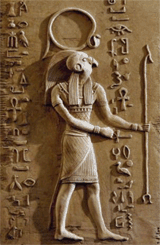
The farmers and shepherds prefered seasonal Sun calendars.
Most typical calendar from Egypt counts one year as 360 days (sacral ideal sun year)
divided into 12 months with 30 days each.
The cycle for sun calendar is usually tropical year with duration of one turn of the Earth around the Sun (about 365,2422 days) in relation to the Sun.
The New Egypt's year was tied to Sirius's ascension - usual time of Neal's flood.
Now we call such year sidereal, and it means, that the Earth's turn around the Sun is calculated
in relation to the fixed stars, like Sirius in Egypt. The length of such year is
365,242198 days (difference with tropical year appears because of the Earth's precession).
Maya's calendar used to divide the same "ideal" 360-days year differently: in 18 months with 20 days each.
But real Sun's year (tropical, or sidereal) lasts more than 360 days. The problem of remaining days in such calendar systems is not really a big problem - rather a benefit , and usually the priests at the end of ideal year have announced some additional "bad" days with rituals of solidarity and relaxation for ordinary people. Not too much difference with nowadays...
Concerning such celebrations, one may also see signs of Sun vs Moon confrontation within Sun calendar system. The followers of "the Darkness" chose to celebrate near summer solstice (Ligo, Kupala day), while "the Light" followers celebrate at winter solstice (near Christmas).
Some acnient calendars
When speaking about old calendars, we shouldn't simplify ancient knowledge. Better even to assume, that in some aspects our predecessors surpassed us. In China more than 3000 years ago Earth's axis slope was calculated as 23°54’. Maya's sun calendar is still the most precise one. Sumer astrologists left us a legacy of 360-degree division of a circle, Zodiac, 12+12 division of a day and much more. Why should we underestimate their scientific experience? not speaking about magical experience, which we mostly deny?

Initially, all ancient calendars were sacral and absolutely incomprehensible for ordinary people, thus useless in every day life. However, it was comprehensible for those people, who had come through a special initiation and was engaged in forming "management decisions". For every day usage it was more convenient to use some "lite" version of timing. The fact that ancient calendars are often the mix of two timing systems, makes it rather difficult to explore. Some traces we can see in Babylon's system account. It combines Sumer's sacral sexagesimal system with convenient for every day decimal system.
Maya's calendar

There were a lot of speculations about this calendar at the end of 2012 year. But most of them do nothing with the real Maya's calendar system. Mayans formed their view of Time on very scrupulous astronomy observations started long before Mayan civilization. So, the essence of such approach is reviewing all changes constantly. Nothing is really repeats in Earth's movement in the Universe. Within human life period we can't see or notice many of such changes. Say, in our mordern calendar we don't take into consideration the slowing rotation of the Earth - it simply does not make sence in foreseeable future (or past).
Mayan calendar combines two timing systems. Sacral day-outter circle had 260 days duration and a name Tzolkin. But there was an ordinary civil year (called Tun) with usual 365 days division as well. Tun was divided into 18 months with 20 days each plus 5 bad and bloody days. Every day had a special name and days were combined into 13-days weeks, but their full repeatability existed only within Tzolkin X 4 circle. There was also a hierarchy of outter civil circles for Tun: Tun X 20 = 1 Katun, Katun X 20 = 1 Baktun; Baktun X 13 = The Great Circle. The Great Circle had 5130 days, or one forth of precession circle. Synchonization between sacral circle Tzolkin (260 days) and civil Tun (365 days) was perfomed every 52-year circle (13 X 4).
The accuracy of civil Maya's sun calendar is near 365,242129 days.
Chinese calendar
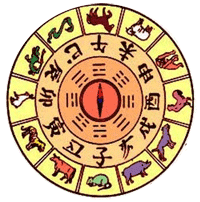
It is a working moon calendar system with floating beginning of the year at new moon. And it is both civil and sacral (astrological) calendar. Besides Moon's cycle, it is based on Upiter's circle (12 moon months X 12) and Saturn's circle (12 moon months X 30). Thus, full synchronization of all circles takes 60 years. Astrological, sacral part of such timing is based on multiplicity of 5 elements (wood, fire, soil, metall, water), 5 colors of the elements (blue or green, red, yellow, black, white), 5 planets (Saturn, Upiter, Mars, Vinus, Mercury) and 5 seasons (spring, summer, end of summer, autumn, winter). It may be also called very successful commercial calendar, assuming amounts of colourful animals produced in China and sold all over the world near Christmas (!) time.
The Celt calendar

We can't know much about Celt calendar, because it was fully sacral. No need in artificial day timing, if you live in mystical connection with the Nature. The same feeling towards time we can find in most Indians ciltures. One thing may really confuses our astronomers. The duration of Druid's month was 28 days - the period of Sun's turn around its axis! There were 13 months in 364-days year. Extra day (or 2 days sometimes) were devoted to ritual celebrations. Druids did not base their timing on 360-days conception.
Watching sunsports and making complex computer modeling, now we have an estimation for such circle: about 27.5 days. Not bad for Druids, having no tools for watching Sun's surface. And bad for our science, if Druids were more precise . Druid priests had a unusual place in social hierarchy too - not above all, but just aside. They never mix their mystical life with usual. The punishment of exile to common life was the worst for any Druid priest. No DNA or family preference for becoming priest, but certain congenital abilities driven by astrology. Like Jedi's choice .
There are some serious studies about Druids astrology (sacral timing). "The Handbook of Celtic Astrology: The 13-Sign Lunar Zodiac of Ancient Druids" by Helen Paterson may be considered a good approach to meaningless goal. Druid's priests were the best Magicians at their time, and they denied any possibility of magical experience to be stored in a written form. "Sacral word is false when written", - it was the principle of Budda teaching too. Very effective way for any tradition to die in a true timely manner (sacral "idiot proof"). However, we may see Stonehendge - megalithic observatory near London. Till now it may be used for eclipse predictions! For full Sun and Moon sinchronization we use Methon's circle (about 19 years). Druids did it well before Methon by rearranging timing stones in 56 (19+19+18) holes. The most interesting and least known fact about Stonehendge is that it was fully reconstructed in 1901 under supervision of William Gowland. So, some "sacral" stones are replaced with concrete blocks, while some others have taken wrong position.
Contemporary calendars
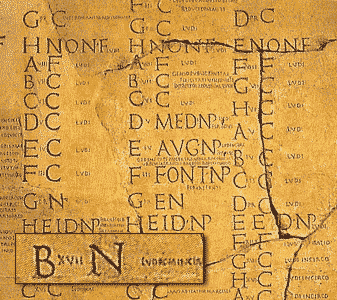
The story of our mordern timing has been started in Rome by July Ceasar.
The calendar which existed before Ceasar was fully discredited by Roman pontifexes - priests,
specialized in sacral timekeeping.
They have just linked civil calendar to payments of taxes. It was enough for corruption to start, and
the year before Julian calendar started (46 BC) is known in the history as annus confusionis. It lasted for 445 days and was the apogee of priests falsity.
Julian calenar is a typical sun-based timing with 365-days year, divided into 12 months of
either 30 or 31 days.
Each fourth year is leap and 366 days long.
Such division of the year came to Rome from Egypt. Вut 5 bad uncounted days were added later to some months.
Another name for leap year is sextile - just 6 days instead of 5.
Nowdays begining of the year near winter solstice has probably Christian roots, but 2000 years ago it was
celebrated near spring equinox according to pagan tradition.
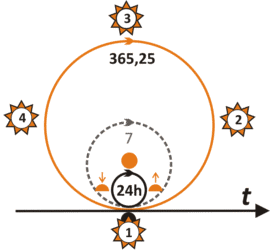
It is easy to calculate accuracy of classic Julian calendar - 365.25 days. But we know the best approximation to real sun year is 365.2422 days. Discrepancy of 0.0078 day per year accumulates to one extra day after 128-year period. In 1582 an acting pontific Gregory XIII has cut extra 10 days from Julian calendar and established one more rule for better precision. Every leap year, divisible by 100 and not divisible by 400 is not leap. That means, that 1900 and 2100 years are not leap, unlike 2000 which is.
Gregorian calendar is used world wide now, and may be considered "Esperanto" calendar due to its simplicity and usability.
Nowdays calendar is not actually conected to any Sun or Moon circles, because it is practical timing for every day use. But most holy days have a sacral conection to Sun and Moon circles. That is why some religious holidays need special calculations, made by Chuch authorities. For example, ortodox Easter should be celebrated at first Sunday after full Moon next to spring equinox and week after Jewish Pesach. German mathematician C.F.Gauss (1777-1855) suggested a special formula, which can be tested here (enter year number). Since the time this formula was written, some efforts were undertaken to unify Easter's day between Ortodox and Catholic Churches (Julian and Georgian calendars).
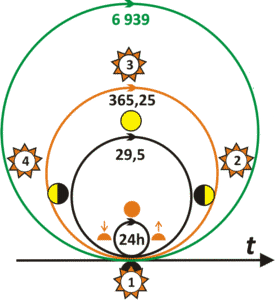
Is it possible to synchronize Sun and Moon in one calendar? Yes, and Druids did it in Stonehendge, but didn't left us any written information. It was written later in V century BC by Greek mathematician Methon. So, we know than Methon's cycle consists of 235 Moon months (6 939.55 days) and lasts 19 Sun years (228 months).
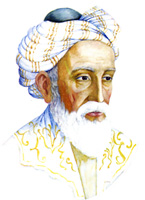
The best Sun-Moon synchronization was done by Arab mathematician (astrologist, poet and Sufi) Omar Khayam, and is known as Persian calendar. The new year starts at spring equinox and lasts 12 months: 6 X 31 day, 5 X 30 day, and last month with 29 days (or 30 days in leap year). It is really make sense, as summer period is a bit longer in north hemisphere. In 33 years there are 8 leap years. The year is leap, if the remainder of division of year's number by 33 is 1, 5, 9, 13, 17, 22, 26 or 30. The accuracy of Persian calendar is 365.24242 days (gregorian calendar's accuracy is only 365.2425 days). And surely Persian calendar has a sacral correspondance to Zodiac and astrology.

There is no sense in accuracy for moon calendars. Moon year duration floats, it just contains certain amount of full moon months.
A Week
We inherited a 7-days week from Babylon,
and the only astronomical reason for such division is that week is about one fourth of moon month.
Not very good approximation.
But when we remember, that Babylonians inherited and adopted astrological knowledge from Sumer,
sacral meaning of 7 days become obvious. There were 7 planets in anhient Astrology, all of them
visible to the naked eye:
Sun, Moon, Mars, Mercury, Jupiter, Venus, Saturn.
All these planets are constantly moving
across the sky within area, named Zodiac. Zodiac is marked by 12 constellations, most of them
kept the name since Nippur calendar in Sumer.
So, astrological calendar, or "wheel in the wheel" assumes continuous succession
of 7 celestian bodies in the wheel of Zodiac.
Not only every day was ruled by a certain planet, but every hour as well.
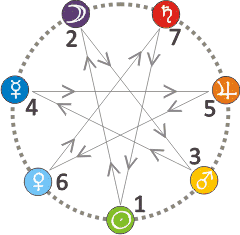
The planetary origin of the names of week days is better seen in English:
Sunday - Sun - ○
Monday - Moon - ☽
Tuesday - Mars - ♂
Wednesday - Mercury - ☿
Thursday - Jupiter - ♃
Fridays - Venus - ♀
Saturday - Saturn - ♄
The most evident sequence of planets (Sun and Moon are also considered to be planets in astrology) corresponds to the veliocity with which the celestial bodies move across the sky. Saturn is the slowest, while the Moon is the fastest. We place the planets on the wheel on the diagramm in such order. Then you may see that the sequence of days-planets in the week is different and makes heptagonal star, starting from Sun - 1, Moon - 2, etc.
The Babylonian astrology is the base of what we call now Western astrology. The same 7 celestial bodies and their energies were interpreted differently in India and China. That makes Eastern astrology absolutely different, and useless for the people not having correspondent eastern "timing" in their subconscious and eastern "chakra settings".
Alexey Krutiakov